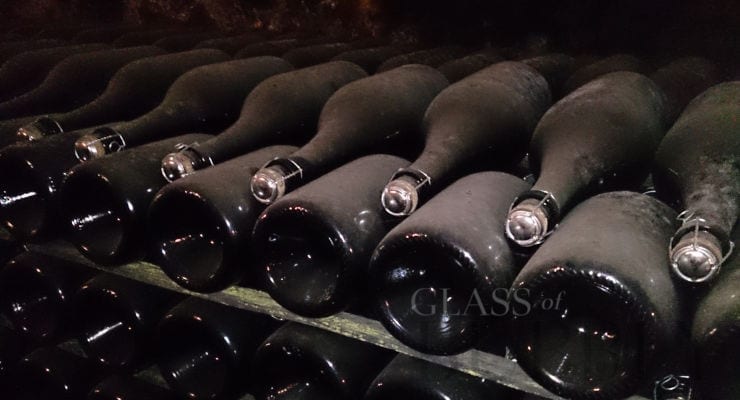Generation gaps in the workplace
Because we are an ageing population, by 2020 there could be up to five different age groups working together in the work environment. If offices are going to be able to accommodate the vastly different approaches to working, businesses are going to have to change.
The generations are as follows:
- The silent generation otherwise known as traditionalists are those born between 1928 and 1944.
- The baby boomers are those born between 1945 and 1964.
- Generation X are those born between 1965 and 1979
- Generation Y (the millennials) are those born between 1980 and 1995
- Generation Z, the new generation are those born between 1995 and 2009, the oldest of this generation are joining the workforce now.
Never before has the workplace experienced five different generations working together, but that is exactly where we’re heading.
What does this mean for your office environment?
Change! The nature of traditional working is going to have to change to accommodate both the experienced older generation and the pragmatic, technologically savvy younger generation.
Generation Y is the first generation to have grown up in the connected world of social platforms and sophisticated devices. They have completely different social behaviours from previous generations. They use email, Facebook, Twitter and other social networks to communicate instantly with people and they are intimately familiar with virtual communities. This generation are accustomed to rapid change and along with that comes an expectation for a new way of doing things. Because of this they may become frustrated with the inflexibility of modern business. According to Cisco, 45% of Generation Y employees claim that they would accept a lower paying job if it had more flexibility on device choice and mobility.
Alongside, this is the onslaught of technology. Workplaces are becoming more technology reliant, meaning that network-based work is replacing traditional hierarchical structures. Societal values are also changing, there is now an increased desire for employees to create work and develop skills that are personally meaningful. Individuals also want to be empowered to create their own working styles and feel that working relationships are adult, adult rather than child,adult.
If workplaces are to hang on to all the generations they need to learn how to accommodate both. They will either lose the valuable experience and skills prevalent in the ageing workforce or the pragmatism and technological savviness present in the younger generation.
Flexible Working
One solution that has been suggested is flexible working. Flexible working is an idea that has been growing more popular over recent years, however, it demands a huge amount of change from the traditional office workplace set-up. It also needs to be managed carefully, due to permanent home-based employees sometimes finding the connection with work becoming fragile.
Older workers have greater life experience and a true willingness to work, which means they can pass on their knowledge and skills to customers and younger members of staff. A quarter of our workforce is over the age of 50 and our apprenticeship scheme is unique as it is open to all employees regardless of age. Our oldest employee is Albert Billington, who is 89. Offering flexibility means we can access a pool of talented colleagues and the benefits are tangible. B&Q has been the winner of the Gallup worldwide award for outstanding Employee Engagement for the last 5 years running and is the only UK business to receive this award.
– B&Q
The Benefits to Flexible Working
The benefits to flexible working are profound. Different generations have different working styles and flexible working can provide for the needs of all the generations. However, it needs to be approached carefully as older workers who are used to working in the workplace are not as readily able to adapt as younger workers.
“Our workforce is changing fast. Globally, more than 50% of our people are Generation Y and this number will continue to grow. Generation Z will shortly be joining us: this generation has grown up with and expect more “virtual working”, greater collaborative space and increased flexibility in working hours/ location”.
Ernst and Young
These benefits include an increase in employee productivity – flexible working make employees more productive than traditional methods of working. They can also use technology to collaborate, communicate and create effective virtual teams. Employees also become better at meeting customer needs and matching customer expectations. Flexibility allows continuous operation across locations and time zones, meeting the complex, global and 24/7 needs of customers in and beyond the UK.
As well as this, flexible working is cost-effective, reducing overheads like business travel and encouraging a more environmentally conscious culture. In turn, this also encourages a more agile infrastructure, reducing office occupancy. The increased collaborative space allows companies to be more agile about where they assign resources while saving significant real-estate costs.
Another significant benefit is the retention of staff. Individuals are able to shape their working styles to fit their circumstances and exhibit greater levels of engagement and loyalty as a result. An ability to change working habits reduces the stresses of a shifting lifestyle and enables employees to consider alternatives to leaving the organisation. Also, more senior women can re-enter the workforce as motherhood requires flexibility, and such arrangements can quickly increase the proportion of senior women within a company.
In terms of the older generations, providing flexibility for older workers creates choices aside from retirement and reduces the loss of tacit knowledge that would result from leaving work. It also allows different cohorts to express their own styles and reduces the potential for inter-generational conflict as a result.
The Difficulties
There are difficulties with flexible working.
1. Lack of Leadership
Older generations and managers operate with more traditional views of work, they are less willing to accept flexibility. And they need to persistently observe the actions of their teams. It can be met with resistance.
Funnily enough, most of the time it is the senior manager who needs to be convinced.
You can get around this by promoting a culture of trust, measuring savings, increased rates of productivity and reduced attrition. Once the senior manager is convinced, it will be easier to gain support from the rest of your workforce as he or she has the capacity to convince others that flexible working is beneficial.
The consistent factor is not the nature of the work but the willingness of the senior manager to embrace and enable flexible working. We find hot and cold spots and it always comes back to the tone of the senior manager. Internally, cultural subsets exist under the broader company-wide culture that espouse the value of flexible work.
– Citi
2. Lack of guidance and support
Flexibility means a huge shift in working style and it can be difficult for employees to adjust. However, with support platforms and online training, employees can be helped to gain an understanding of flexible working. These platforms can also mean that mentors are able to provide real-time support and feedback.
3. A risk-averse culture
A risk-averse culture can hinder flexible ways of working, and there is still a lack of urgency around adaptation. However, running pilot plans and experiments can go a long way to combating this.
4. A culture of presenteeism
Reluctance can come from managers who operate on more traditional views of work and their desire to observe the actions of their teams which can restrict employee flexibility. This can be overcome by promoting a culture of trust. Trusting employees when they are not in view and measuring outputs over inputs.
Summary
The benefits of flexible working are obvious, it can really help sustain a workplace in the fast-paced changing office environment of modern times. However, if it is to work, it needs to be managed carefully, ensuring senior managers are on board, strong leadership applies and that employees feel a constant connection with their work environment.









